With generous credit card welcome bonuses and low redemption rates, Alaska Mileage Plan is a popular program for booking long-haul international flights in premium cabins.
Even better, the Alaska Airlines website is a highly efficient tool when searching for flight redemptions on Oneworld carriers and Alaska’s non-alliance partners, compared to many of its rival loyalty programs both within and outside of Oneworld.
In this article, following up on our award search refreshers for Aeroplan and British Airways Avios, let’s take a look at how to optimally search for award space when redeeming Alaska miles.
Searching on the Alaska Airlines Website
Along with Alaska Airlines’s own flights, the vast majority of Alaska’s airline partners can be searched and booked using Alaska’s online search engine.
The search engine is accessible via the airline’s homepage. To look for award seats, fill in the form with details of the itinerary and tick the “Use Miles” check box.
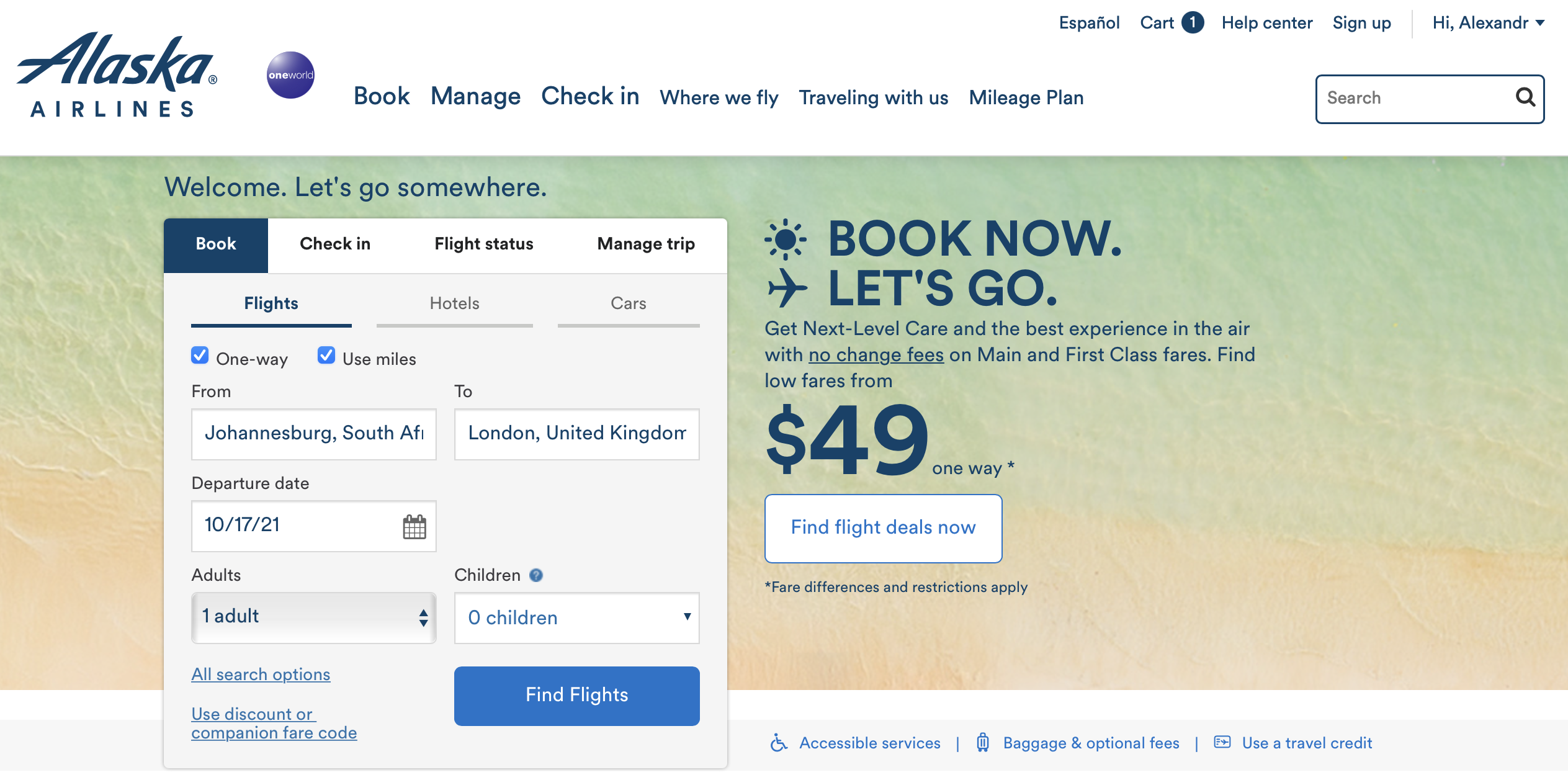
Select “One-Way” too, even if flying a round-trip. That’s because Alaska does not allow more than a single partner airline on an award ticket.
Therefore, booking two one-ways lets travellers pick different carriers for the inbound and outbound parts of the journey, allowing for more choice when there is not much availability.
Schedule View
Upon submitting the request, the search results page appears. There are filters on the left, a one-week availability overview at the top, and the list of flights on the right. This is the schedule view – one of the three display options available.
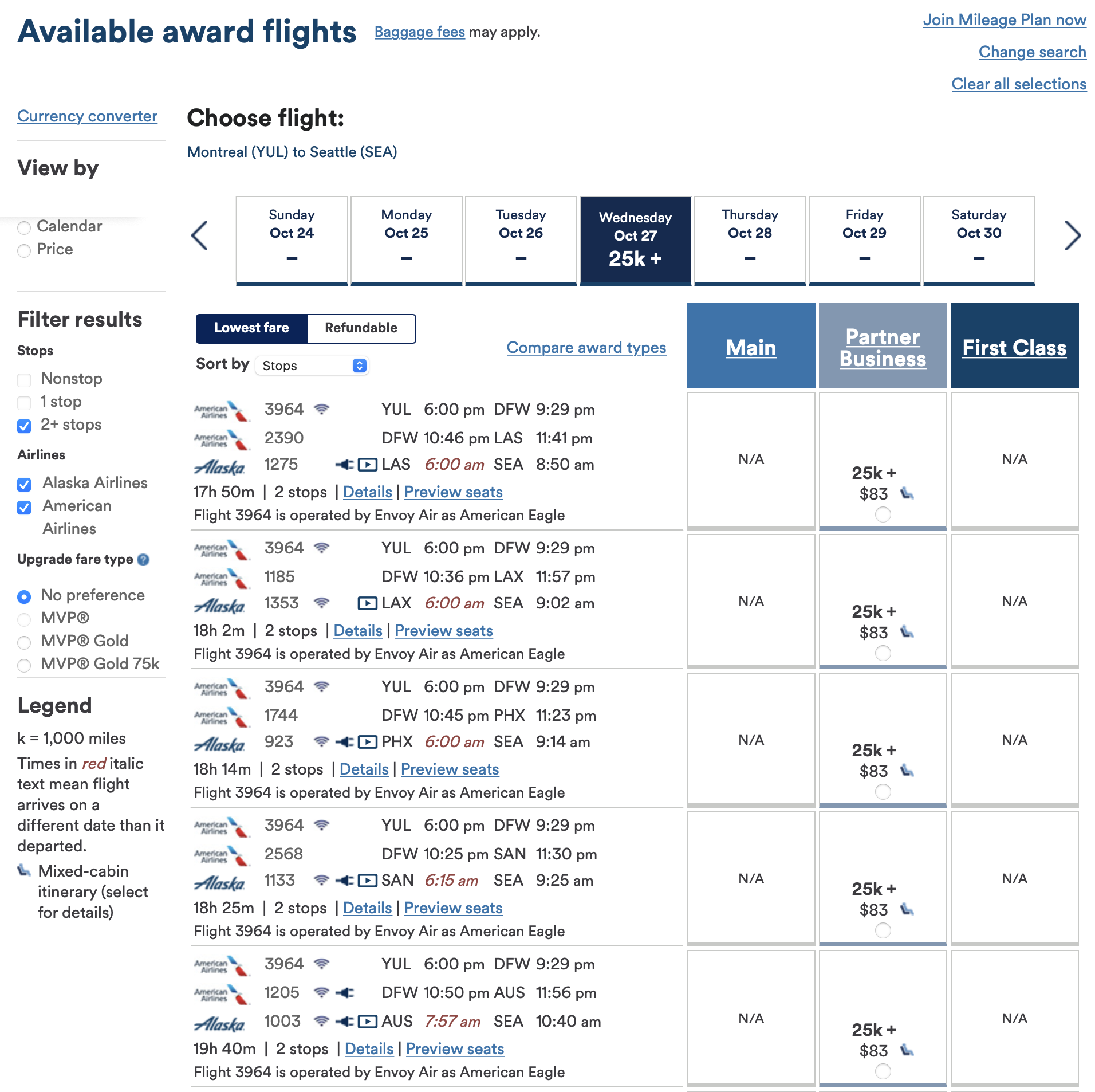
In the schedule view, travellers can filter itineraries by number of stops, operating airlines, and the Alaska upgrade fare type. The latter refers to the availability of upgrade seats for elite members on Alaska-operated flights.
The list shows all four classes of service: economy, premium economy, business, and First Class. Classes may be hidden if they have no available seats.
Some flights within the United States are displayed as First Class, while others show up as business. This becomes confusing when booking connecting international itineraries with one Alaska segment and a partner airline that offers “true” First Class, such as Japan Airlines. Make sure such itineraries are not mixed-cabin with the longer segment in economy – this would be denoted by an icon next to the price of the flight.
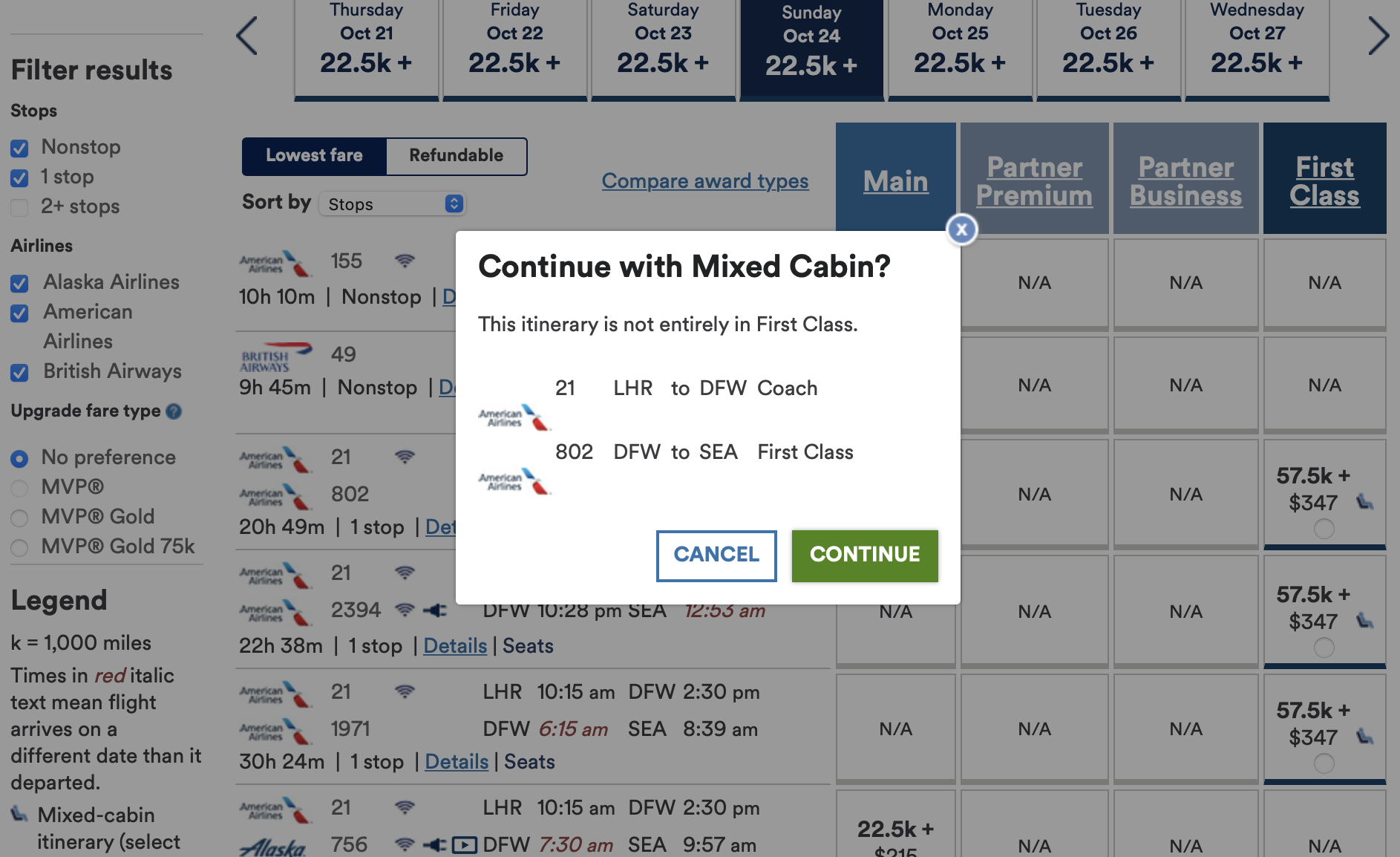
As Alaska cannot combine partners on a single ticket, it may not show complex itineraries passing through multiple Oneworld hubs. For example, a two-stop routing with flights on both British Airways and Qatar Airways wouldn’t be displayed, even if there were award space available. In such cases, it’s better to book with Avios or Asia Miles instead.
The list of flights can be sorted by the number of stops, price (in the lowest class of service available), duration, departure time, arrival time, and by giving a preference to Alaska-operated flights.
For each flight, the search engine displays the operating airline, flight number, departure and arrival information, number of connections, and in-flight entertainment capabilities. It appears that Alaska doesn’t have access to details about the IFE on every partner, so results may be misleading at times. The Qantas website is more reliable in that regard.
The flight details pop-up displays the aircraft type, flight and layover durations, as well as on-time performance data, if available.
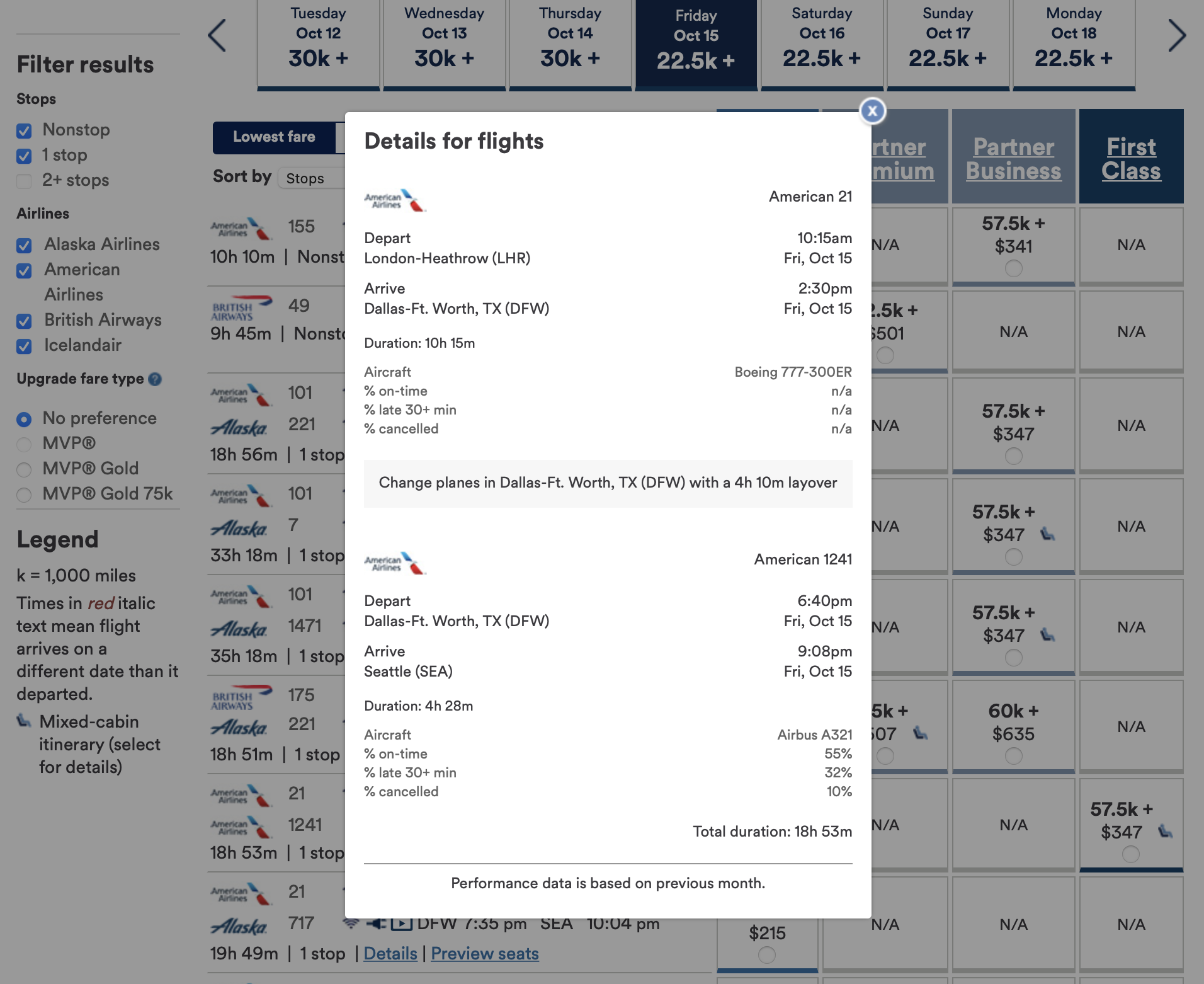
Calendar View
The calendar view is accessible by choosing the calendar radio box in the sidebar, or ticking the “Award calendar” box in the search form.
In the calendar view, Alaska displays availability across an entire month. By default, the search engine shows the lowest prices in economy class, but travellers can change it to business, First Class, or Alaska saver awards (only available on itineraries operated by Alaska in full). Premium economy is not supported.
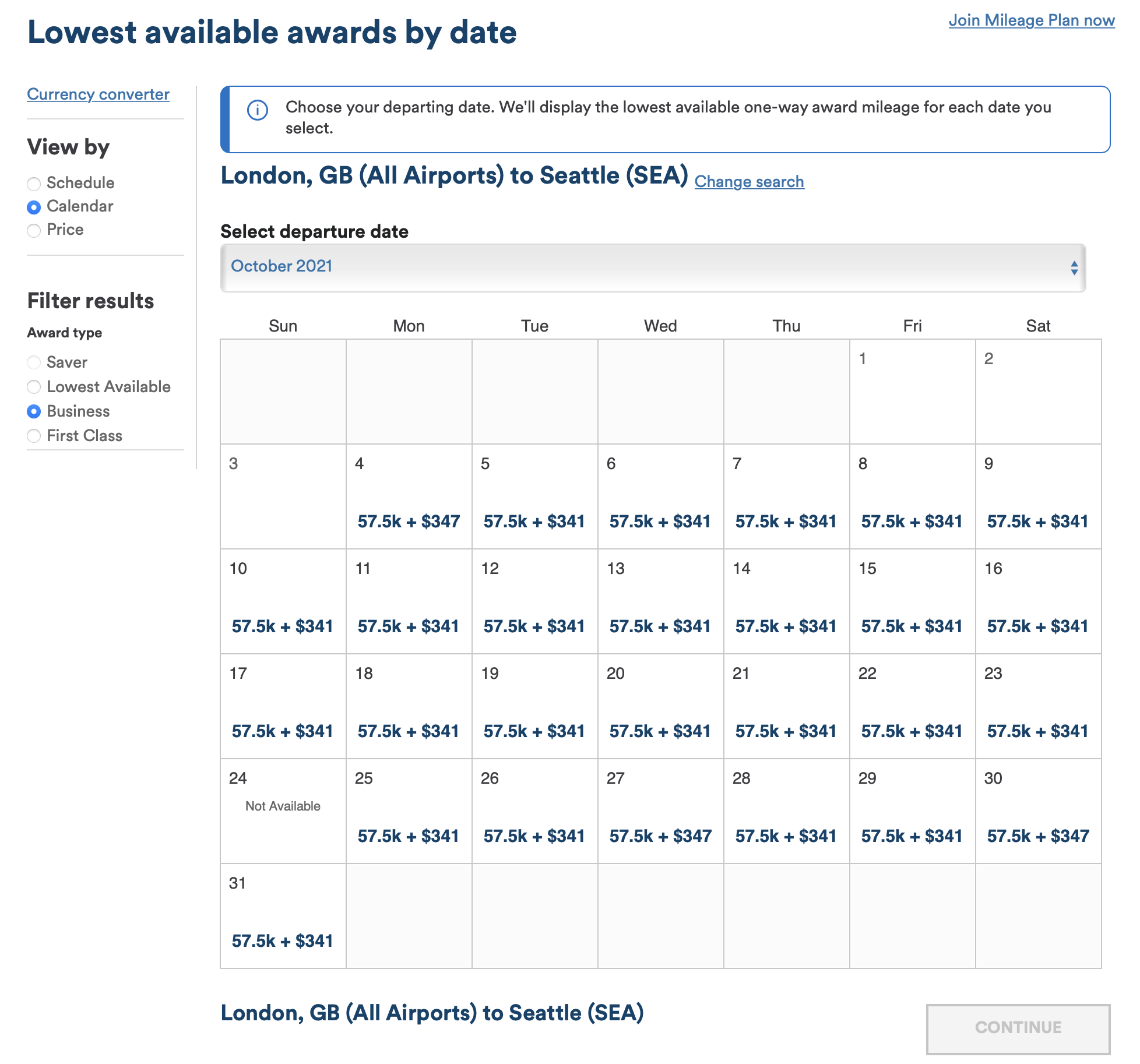
The lack of distinction between international and domestic First Class persists on this page. Unfortunately, the calendar does not display mixed cabin information; that is only visible in the schedule view.
Price View
The third display mode is called “Price”. It shows the list of all available flights, sorted according to the number of miles required to book.
The price view only shows economy class, and there is no way to make it display a higher cabin. Therefore, it is not of much use for booking aspirational award trips. Budget travellers, on the other hand, may find the abundance of sorting options convenient.
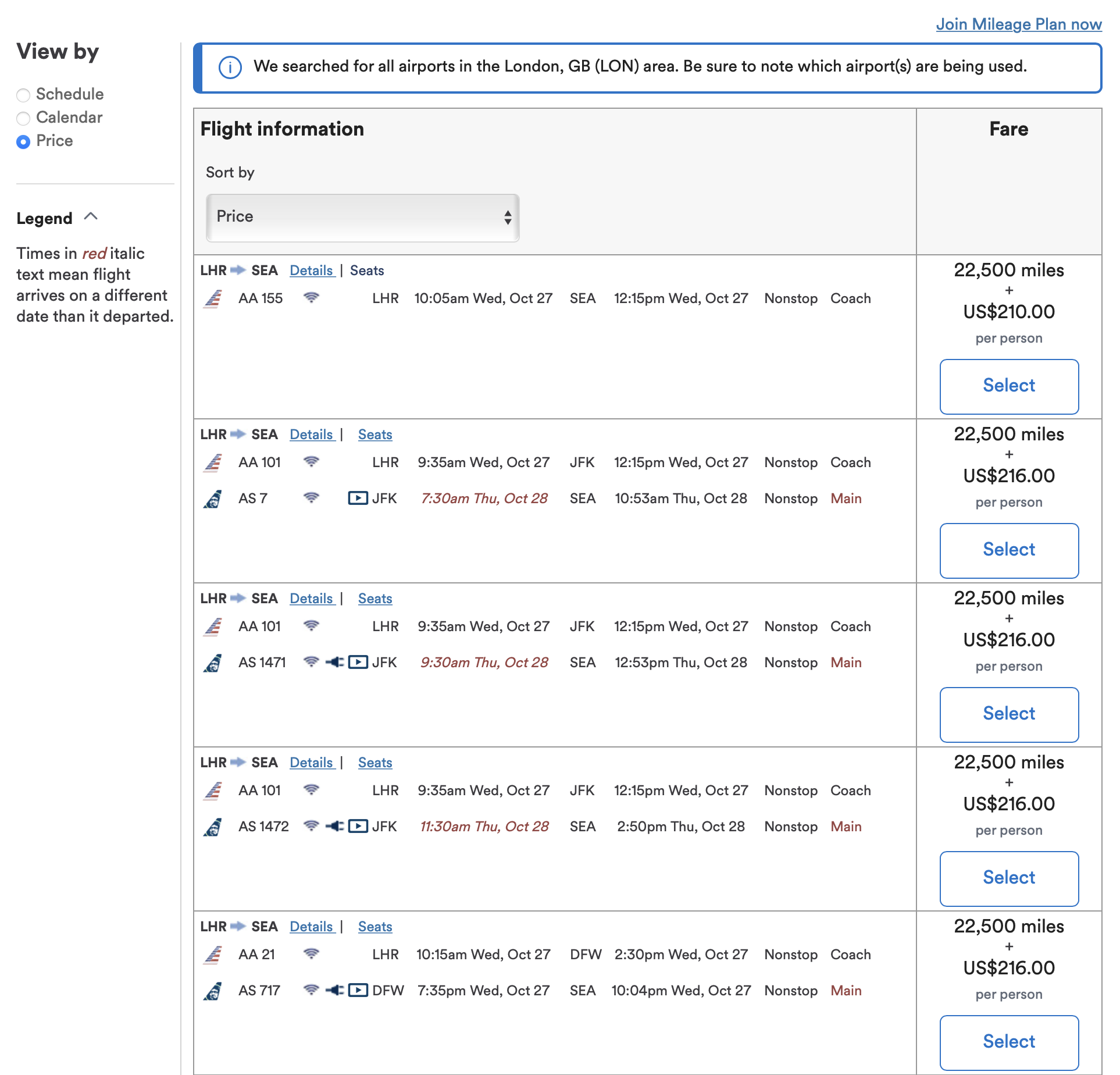
Searching for Cathay Pacific Award Flights
One of the most popular uses of Alaska miles is Cathay Pacific First Class and business class awards between North America and Asia, as well as to points further beyond, like Africa, the Middle East, and Oceania. First Class awards start at only 70,000 Alaska miles one-way, which is an exceptional deal.

While most of Alaska’s airline partners are bookable online, Cathay Pacific is one major exception (the other being LATAM). For these flights, travellers must call Alaska Mileage Plan to get a true picture of which award seats are available, but it’s possible to do some legwork using other airlines’ search engines first.
The best tools to use would be the same as what’s outlined in our guide on searching and booking British Airways Avios awards. The British Airways or Qantas search engines will likely be the most helpful places to search, with Qantas offering a 30-day calendar view for US departures as part of their “older” site.
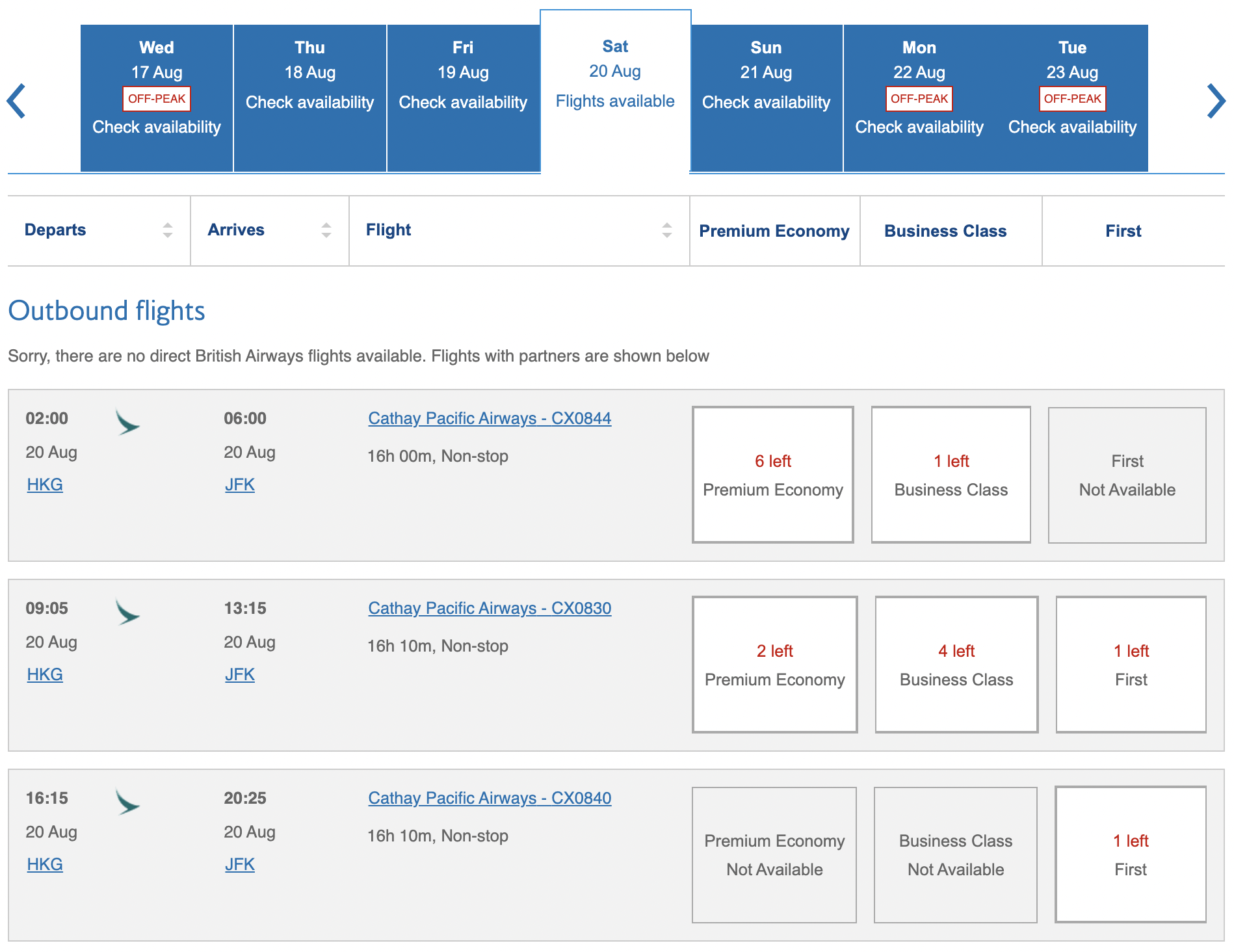
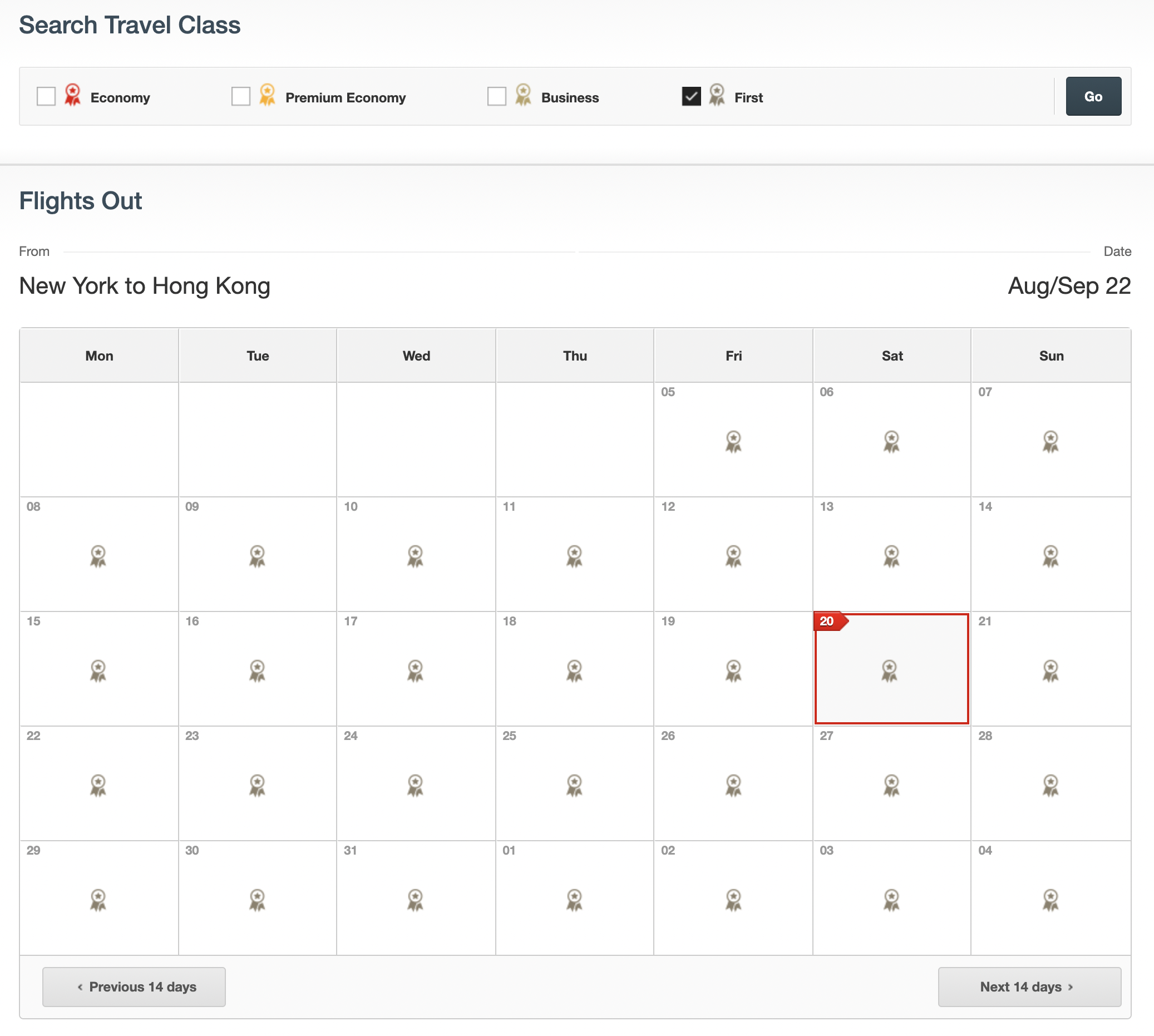
(Though it may be tempting, avoid using Cathay Pacific’s own Asia Miles program to search, since Asia Miles may display additional award space to its own members that isn’t bookable through partners.)
Even though the availability on British Airways or Qantas generally lines up with what Alaska can book, it’s not always a perfect match. The final step will always be to call Alaska themselves and confirm if they can see the award space before completing your booking over the phone.
Multi-City Itineraries
Alaska allows one stopover per one-way bound on all award tickets. The stopover is bookable online at no extra charge.
Cities where passengers can have stopovers vary by airline. Generally, stops are restricted to hub or focus cities of Alaska and their respective partners. Just like with simple one-way itineraries, no two partners can be combined on tickets with stopovers.
To book an itinerary with a stopover in between, click on the “All search options” link on the homepage, then fill in the form and tick the “Multi-city” checkbox. As before, look for one-way multi-city trips instead of round-trips to allow for different carriers for the inbound and outbound parts of the journey.
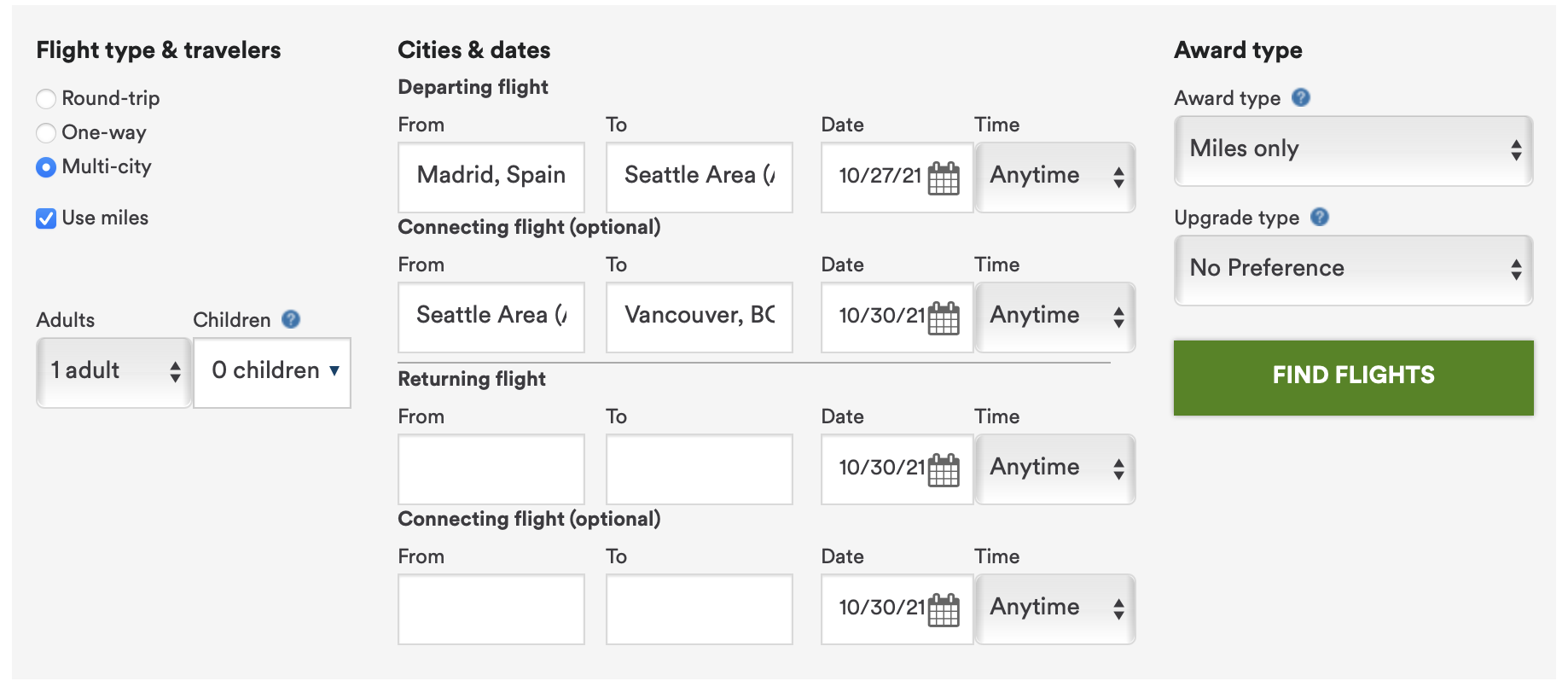
If any routing that has open award space satisfies Alaska’s routing and stopover rules, it will show up. Only the schedule and price views can be used with multi-city searches.
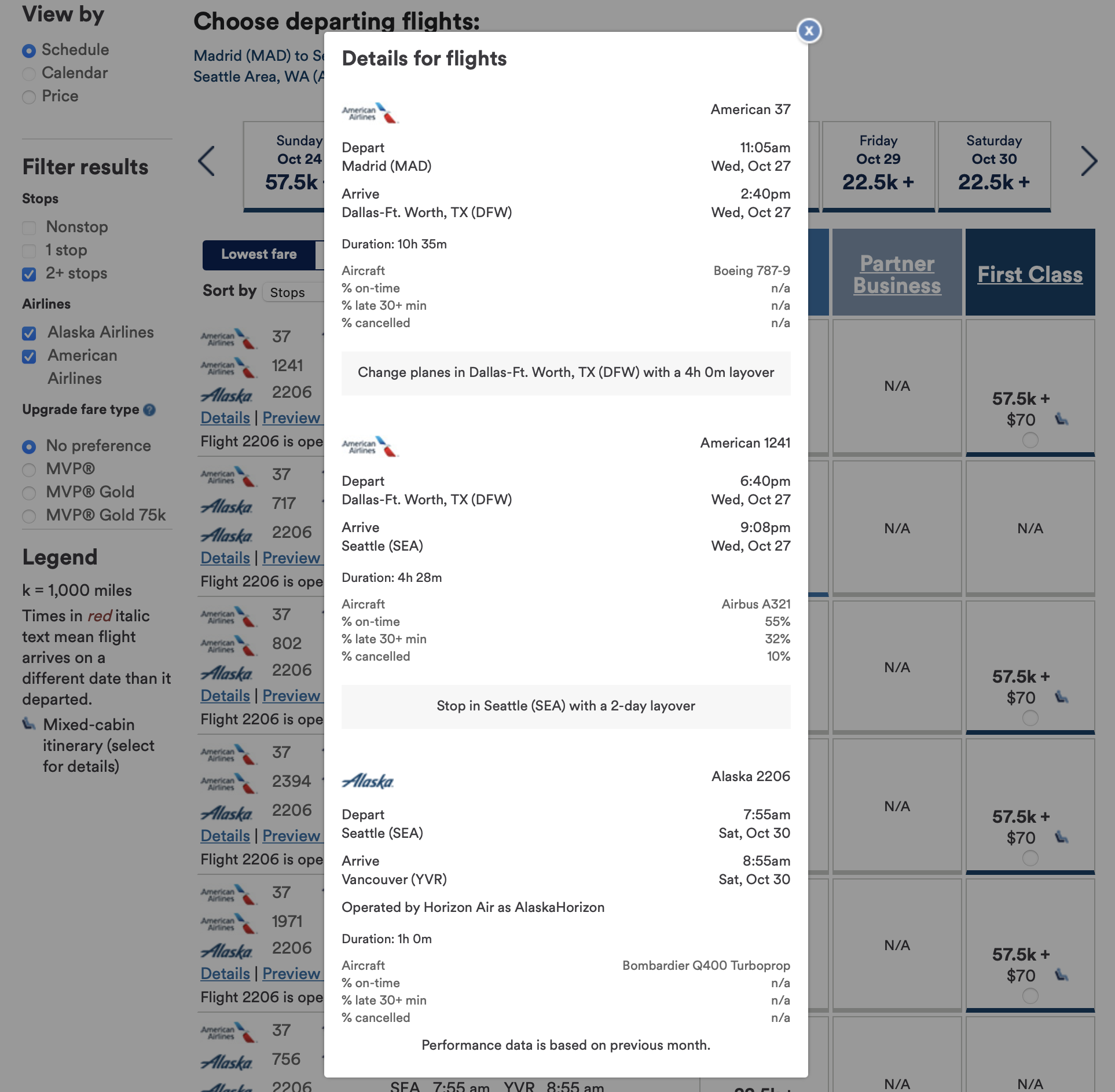
Using the Alaska Website Efficiently
Award search is a time-consuming task, especially on complex itineraries. The more efficient a traveller is when looking for award space, the less time trip planning takes, and the less the chance there is of somebody snagging an aspirational First Class seat right under one’s nose (speaking from experience).
I like to start with the calendar search on the Alaska website. I am usually flying in business class, so I choose the corresponding filter option in the sidebar. Without even looking at the flight results, the calendar gives me an idea whether the trip that I’m planning is feasible at all.
Next, I click through the days that I could travel on. I skim through the flight results looking out for three things: mixed-cabin itineraries with the long segment in economy, British Airways partner airline awards with high fuel surcharges, and routings with weird connections.
When I spot a suitable itinerary, I take note of it. If there are any good alternatives, I write them down as well. I usually book Oneworld trips with British Airways; they are sometimes picky with the routings they allow, so I prefer to have backup options.
Conclusion
Alaska Mileage Plan is the only US frequent flyer program accessible via Canadian credit cards. The partnership with MBNA opens the doors to exciting redemption opportunities on the Oneworld alliance and Alaska’s other partners.
The Alaska website is fast and implements features that make searching for award space an easy and efficient process. Thanks to the calendar view, travellers don’t have to click day-by-day to find sporadic business and First Class availability. The schedule view shows enough information at a glance to filter out mixed cabins and other inconvenient options.
The only limiting factor is that Cathay Pacific flights do not show up on the online search engine, so travellers need to search with another airline’s website (such as British Airways or Qantas) before calling Alaska to make these bookings.
In the future, I will be looking forward to redeeming my Alaska miles to take advantage of stopovers on one-way journeys and fairly priced premium cabin redemptions between North America and Asia.










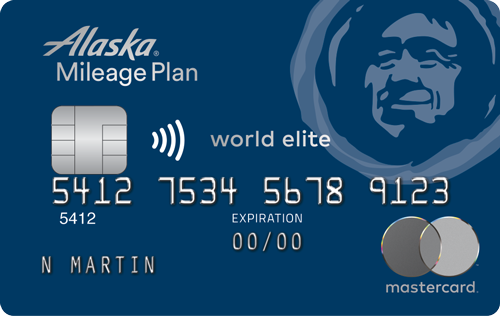









Is it ok to use Alaska stopover on Qatar for the route SFO-DOH-BKK?
Great article! Do you know when they are going to start showing premium economy tickets for JAL? thanks
Actually looks like they are there now lol
Right now, it appears YYC to SEA do not show up. I assume because flights are currently suspended because of COVID.